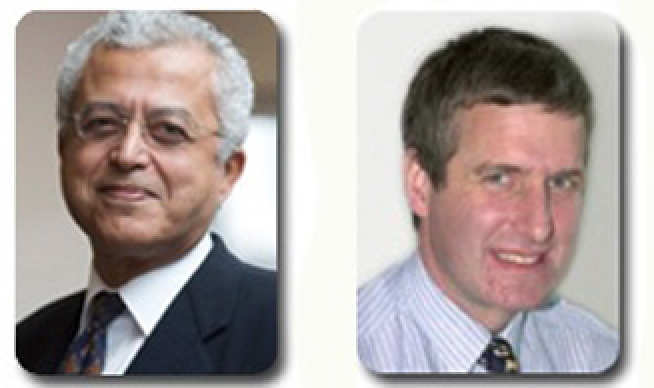Cutting their losses
A team of surgeons and engineers have collaborated at Imperial to develop surgical tools and techniques that dramatically improve the clinical outcomes for liver cancer patients. For many patients with liver cancer, surgery to remove the tumour is an ideal treatment because the liver can regenerate itself. However, the liver is such a vascular organ that the risk of massive blood loss and other complications are high.

The team led by surgeon Nagy Habib and bioengineer Robert Dickinson has developed a new type of electrical device that allows the liver to be cut without bleeding. In clinical trials, which compared the new device to conventional liver surgery, surgeons were able to halve patient mortality, complications and length of post-operative stay.
Even more dramatic, the need for blood transfusions and intensive care was reduced by 90%. When the first 100 patients were followed up after surgery, tumours had not returned within 20 months.
The device developed at Imperial uses a type of radio-frequency (RF) current that is known to directly heat tissue, thereby sealing off blood vessels. Using a high frequency current prevents stimulation of muscles or nerve cells.
RF knives are widely used in surgery for cutting and sealing tissues, but commonly operate as a single electrode (with the return electrode being a pad under the patient).
Habib and Dickinson developed a bipolar device that in its final design - the Habib 4x - consists of a square array of positive and negative electrodes. This array can seal a much larger region of tissue, allowing surgeons to seal off a track in the liver before removing a tumour. According to Dickinson this makes it so much easier to seal larger blood vessels, speeding up operations and reducing blood loss.
Imperial spinout company EMcision Ltd licensed the Habib device to US firm AngioDynamics, which has sold over 23,000 devices worldwide, saving an estimated 1,000 lives. It is also being used to treat other cancers: kidney, lung, pancreatic, spleen and uterine tumours can all be targeted.
Habib and Dickinson are also developing other devices for emergency surgery. For example, new devices sold by EMcision can help reduce blood supply to tumours, but also reduce blood loss in trauma patients. In future, they hope to develop devices for battlefield surgery and field hospitals. A collaboration that is a cut above the rest.


